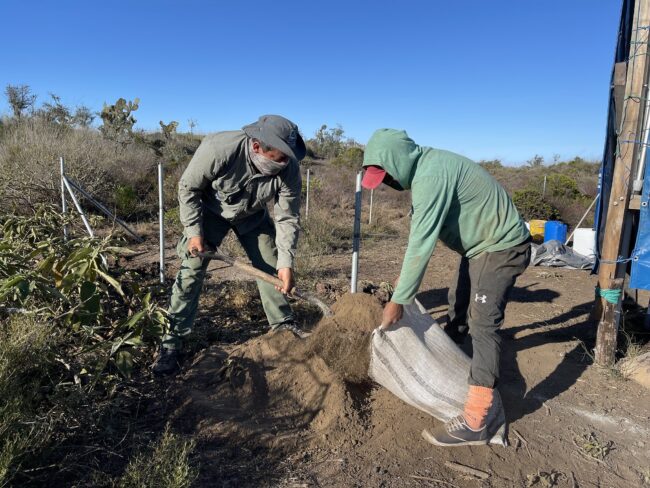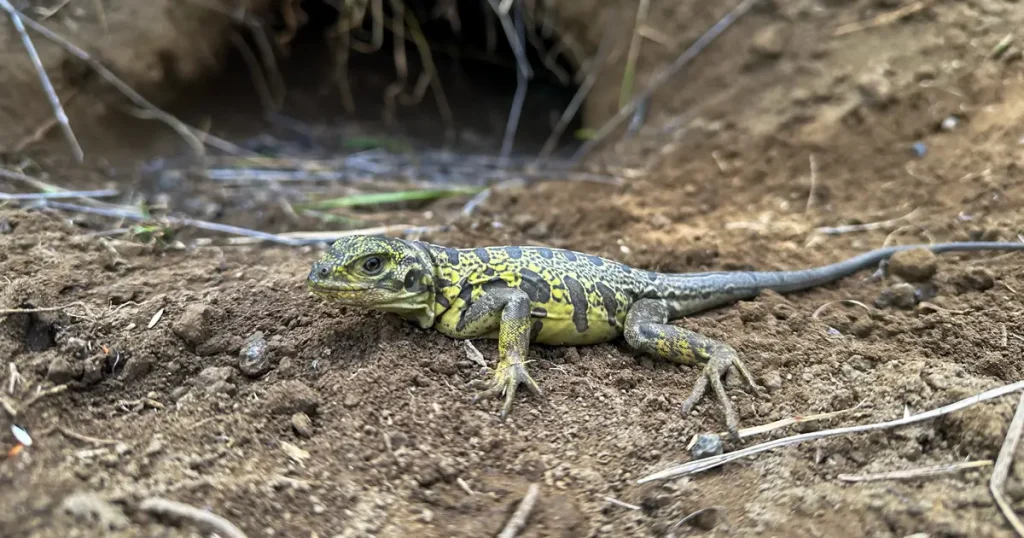Q&A: A Front Row Seat to the Eruption of Wolf Volcano
“Without a doubt one of the most exciting experiences that I have ever had in nature was the privilege to have a front row seat to witness the eruption of Wolf Volcano.”
– Jorge Carrión

In the early morning hours of January 7, 2022, Wolf Volcano erupted unexpectedly. A team of scientists and park rangers, including Galápagos Conservancy Conservation Manager Dr. Jorge Carrión, was camped on the summit at the time of the eruption as part of an expedition focused on the research and protection of the critically endangered Pink Land Iguana.
Dr. Carrión, how does it feel to be one of the only people in the world to have had the opportunity to witness a volcanic eruption up close?
Really, I feel very fortunate to have the opportunity to work in locations that so few people have access to, and witness firsthand unique natural spectacles such as Wolf’s eruption. Without a doubt this has been the greatest experience that I have had in nature.
And what were you doing on the volcano?
Galápagos Conservancy is supporting the construction of a permanent structure on Wolf Volcano, with the end goal of improving our capacity and research capabilities in this site and with the Pink Land Iguanas specifically. My role required that I was present in camp to work together with the Park Rangers to complete these objectives.

Let’s focus on your experience. Did you have any fear at the time, and what was your first reaction upon the realization that the volcano was erupting?
In reality, I had no fear. Nevertheless we were incredulous that an eruption would happen right before our eyes. Our first move was to identify the site of the eruption and, following this, evaluate the level of risk and the possibility of an evacuation. This wasn’t necessary due to the eruption being on almost the opposite flank of the volcano in respect to our position.
One of your photographs shows you close to the mouth of the erupting crater. What did you feel in that moment? Was it a risky decision?
In order to confirm the site of the eruption it was necessary to get close to the edge of the crater. Once we were sure that we weren’t at risk, effectively the majority of the photographs were taken from the edge of the crater. The sensation is indescribable, you feel fortunate, lucky, and blessed. To have the ability to enjoy this spectacle totally safe and with a front row seat is an enviable situation.
And what about your fellow expedition members, did any of them feel at risk or scared?
I didn’t sense fear from any of them and, to the contrary, they were excitedly taking photos and videos of the eruption. We all stayed at the edge of the crater observing the eruption and conversing for around two hours. Later, before sunrise, we returned to the site to photograph the event with the first rays of sunlight.
Tell us, briefly, about volcanic processes and how they impact the terrestrial fauna of Galápagos. How do animals survive the eruptions? Do they hide? Do they escape to other parts of the island?
Part of the natural selection of the species of Galápagos has been their capacity to survive in extreme conditions, among them volcanic eruptions. Due to the high temperatures of these events, and the speed of the lava flows, little or nothing can be done to escape for large vertebrates like Land Iguanas and especially Giant Tortoises due their slow movements. Although eruptions are unpredictable, the key to survival is finding the right place to live. In the case of Wolf, the most recent eruptions have away from where the Yellow Land Iguanas, Pink Land Iguanas, and Giant Tortoises live.

Is there evidence of the destruction of food sources for terrestrial fauna due to volcanic eruptions?
Plants can be the most vulnerable organisms when facing an eruption due to their immobility. There is evidence of lava flows that have crossed plant communities and destroyed everything in their path, including in some cases forming insurmountable barriers that impede access to food eaten by, for example, Giant Tortoises.
Have you ever observed Pink Land Iguanas using volcanic ash to construct their nests?
Pink Land Iguana nests are constructed in sites with fine sediment. Thus in some way, Pink Land Iguanas, as with all animals of Wolf, come into contact with materials of volcanic origin.
The work that you do is without a doubt critical for Galápagos. How do you feel to be part of these types of (sometimes risky) expeditions to protect the Archipelago’s most emblematic species?
To work in conservation is a great pleasure, and to know that your efforts will give future generations the opportunity to know and enjoy what we enjoy today is the greatest gratification that I get from this job. Here there are no calendars or set schedules once in the camp. Sometimes you return at five in the afternoon, and on other occasions you return to camp in the middle of the night. Plus, the fact that you are working on an active volcano brings a touch of additional excitement to the day’s work.
Jorge, without a doubt your passion is Galápagos and your work means that often you are away from your family. Does your family support you in everything that you do? How do you balance your work with your role as a father and husband?
The answer is a resounding yes. My wife supports me in every step I take, although she doesn’t totally enjoy being alone. However, she understands that what I do is to create a better future for everyone, both for the family and the community since conservation implies benefits for all. With my work I also hope to inspire my daughters so that they too would love to work in conservation.



